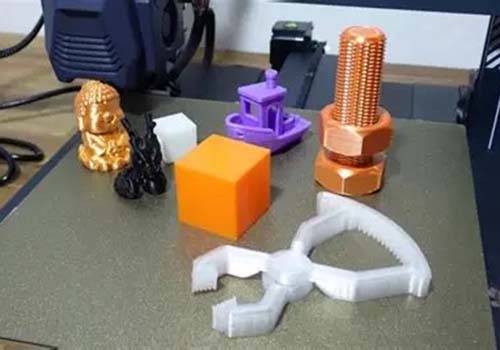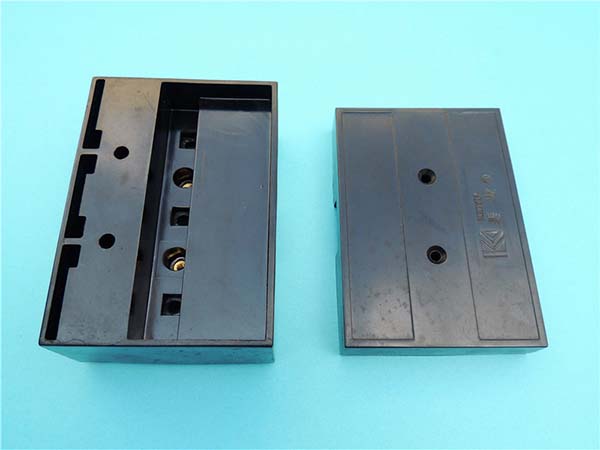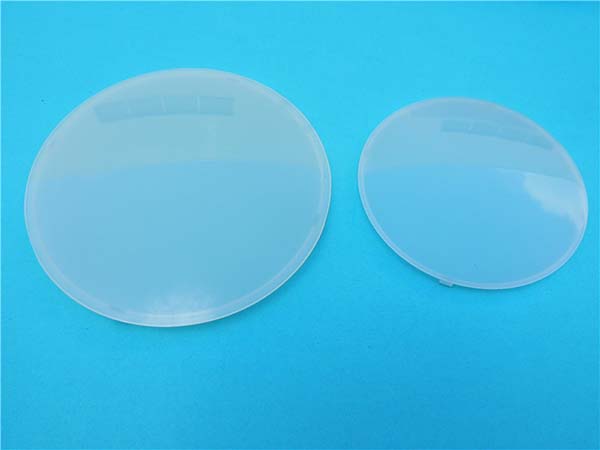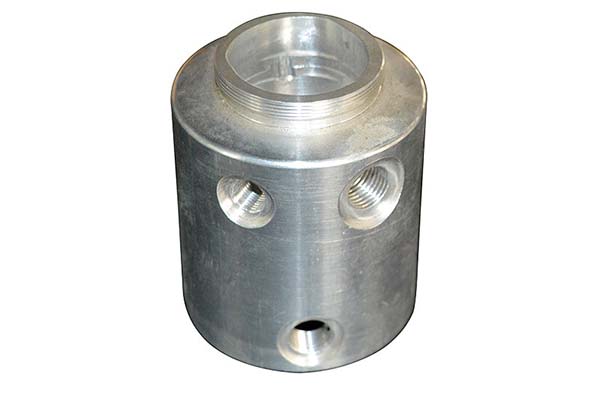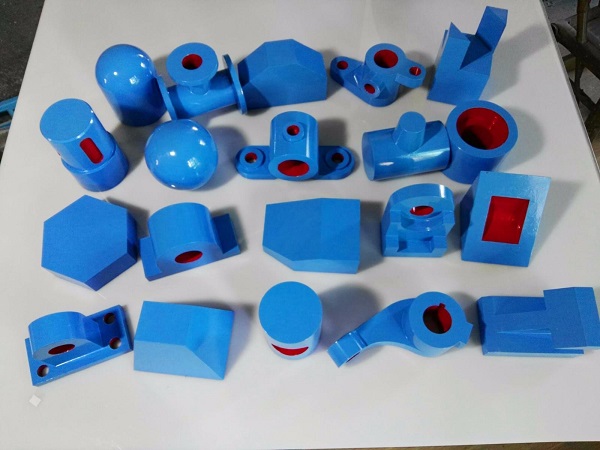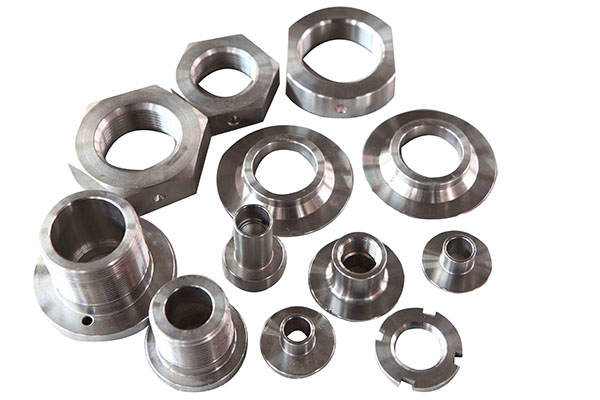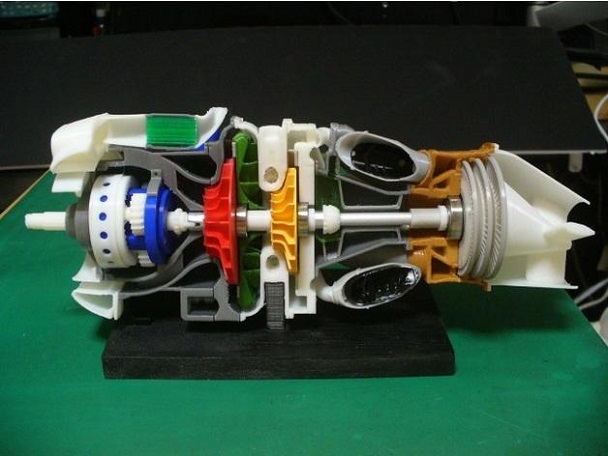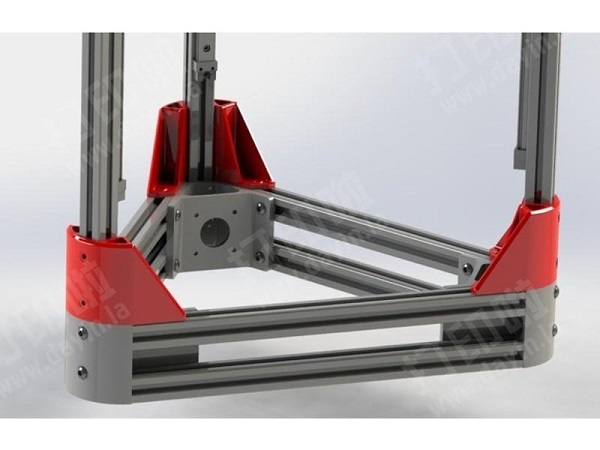An industrial 3D model is much more than just a shape on a computer screen. It's a valuable digital copy of a real physical part. When these models aren't created properly, they can cause expensive mistakes in testing, manufacturing, and throughout the entire production process. This guide goes beyond basic modeling to show you how to create strong, efficient, and smart industrial 3D models. We'll cover the important standards and techniques needed for high-quality engineering work.
This guide will teach you how to:
- Make an industrial 3D model work better for computer testing and analysis.
- Turn 3D scans into proper CAD models using professional methods.
- Add important manufacturing information using MBD and STEP AP242 formats.
- Make large assemblies run faster for real-time viewing.
- Build smarter digital files with built-in information.
Problems with Poorly Made Models
Spending time to standardize and improve models isn't wasted effort - it's a smart way to prevent costly problems. Bad models create a chain reaction where small mistakes in the design phase turn into big problems later. When you understand the real negative effects, it becomes easy to justify spending resources on these practices. These failures happen in predictable and expensive ways throughout a product's life.
Common problems include:
- Inaccurate Testing: Messy geometry with small gaps, overlapping surfaces, or too much detail causes mesh creation to fail in engineering software. Even when it works, poor-quality meshes give wrong stress calculations in structural analysis or incorrect flow predictions in fluid analysis, making the results useless and leading to bad engineering decisions.
- Manufacturing Mistakes: When an industrial 3D model doesn't include built-in manufacturing information, engineers must rely on separate 2D drawings. This creates two different sources of information. Differences between the model and the drawing, often due to version control problems, result in parts being made to wrong specifications, leading to waste, rework, and assembly failures.
- Software Compatibility Problems: When using multiple CAD programs, moving models between systems (like from SolidWorks to CATIA to NX) often corrupts data. Poorly made models with complex surfaces or non-standard features are more likely to have translation errors, creating broken geometry that takes hours to fix manually.
- File Size and Performance Problems: An assembly with hundreds of high-detail models, each showing every tiny feature down to bolt threads, makes systems run very slowly. This causes long loading times in product management systems, makes CAD software nearly unusable, and prevents real-time viewing or virtual reality reviews.
Managing Detail Levels for Computer Testing
The amount of detail needed for a testing model is completely different from what's needed for design or manufacturing models. Preparing an industrial 3D model for fluid flow analysis or structural testing requires careful simplification, called de-featuring. This important step reduces setup time, greatly improves meshing success, and is essential for getting accurate, timely results.
Understanding Different Model Types
An engineering team often works with three different versions of the same part. The design model contains the complete design history and intentions. The manufacturing model includes all features, tolerances, and manufacturing information needed for production. The testing model, however, is specially built for analysis. It's a "simulation-ready" file, stripped of any geometric detail that doesn't matter for the specific physics being studied, ensuring computer resources focus only on what's important.
A Practical Guide to Simplification
The process of removing unnecessary features is systematic. The goal is to remove geometric complexity that would force the meshing software to create too many small, poor-quality cells, which either slow down the analysis or cause it to fail.
1. Find and remove non-essential decorative features. This is the first and easiest step. Hide or delete features like raised or pressed text, logos, and part numbers. These add no value to the analysis but create significant meshing complexity.
2. Hide or simplify small, unimportant features. What counts as "small" depends on the scale of the analysis. For large structural analysis, this includes small holes, rounds, and chamfers that don't significantly affect overall stiffness or stress concentration in areas of interest. For fluid analysis, this could be bolt heads or surface textures that are tiny compared to the overall aerodynamic shape.
3. Close gaps and fix surface geometry. For fluid analysis of internal flow, the model must define a single, sealed fluid volume. This often requires closing small gaps between parts in an assembly or fixing imported geometry to create a perfectly sealed solid.
4. Split complex faces to guide the meshing software. Sometimes, it helps to split large, complex faces into simpler regions. This allows more control over the mesh, enabling targeted mesh sizing or structured grids in specific areas, improving accuracy and efficiency.
Detail Level Requirements Compared
The specific simplification strategy depends entirely on the type of analysis being performed. A feature that's critical for structural analysis may be completely irrelevant for thermal or fluid analysis.
| Analysis Type | Key Features to Keep | Features to Remove/Simplify | Reason |
| Structural Analysis | Load-bearing surfaces, critical fillets, contact faces | Logos, small non-load-bearing holes, threads | Focus on structural integrity and stress paths, reduce mesh complexity in non-critical areas. |
| Heat Analysis | Heat sources, major thermal paths, surfaces with convection | Small geometric details, internal non-thermal parts | Focus on heat transfer paths and surface areas, simplify mesh to speed up calculation. |
| External Air Flow | Overall aerodynamic shape, key boundary layer features | Internal components, fasteners, surface texture | Focus on external fluid flow, ensure a clean, smooth outer surface for the boundary layer. |
| Internal Flow | Wetted surfaces, fluid path geometry, inlets/outlets | External housing details, non-fluid components | Focus on the internal fluid volume, ensure a "watertight" model to define the flow domain. |
Scan-to-CAD Workflows
Reverse engineering is a critical skill for modern engineering departments. It's the process of creating a parametric, manufacturing-ready industrial 3D model from 3D scan data of a physical object. This workflow is essential when dealing with old parts that have no existing CAD files, checking a supplier's part against its original design, or recreating complex geometry for which design data has been lost. A disciplined scan-to-CAD process ensures the resulting digital file is not just a simple shape, but an intelligent model ready for analysis and manufacturing.
The Scan-to-CAD Process
This process transforms a physical part into a fully functional digital twin.
Step 1: Data Collection (Scanning)
The choice of scanning technology depends on the part's size, complexity, and required accuracy.
- Structured Light Scanners: Project a pattern of light onto the object and use cameras to capture how it bends. This method is fast and captures high-resolution texture and geometry, making it ideal for complex, organic shapes and medium-sized parts.
- Laser Scanners: Use a laser line or dot to measure points on the object's surface. They are robust, less sensitive to room lighting conditions, and work well for large-scale objects like car bodies or industrial equipment.
- Coordinate Measuring Machines (CMM): Use a physical probe to touch points on the part. While slower, CMMs provide the highest level of accuracy and are the gold standard for precision validation, though less practical for capturing entire freeform surfaces.
Step 2: Point Cloud / Mesh Processing
The raw output from a scanner is a point cloud—a massive collection of 3D data points. This cloud must be processed before modeling can begin.
- Alignment: If multiple scans were taken to capture the entire part, they must be registered and aligned into a single, unified coordinate system.
- Cleaning: The raw data always contains noise and outlier points caused by reflections or scanner limitations. These incorrect points must be filtered and removed.
- Meshing: The cleaned point cloud is then converted into a polygonal mesh, typically in an STL format. This mesh forms the visual reference for the CAD modeling process.
Step 3: Feature Extraction and Modeling
This is the most critical and skill-intensive phase, where the mesh is used as a template to build a clean, parametric CAD model. It's important to distinguish between automated and manual approaches. "Auto-surfacing" tools can quickly wrap a surface around the mesh, but this often results in a "dumb" solid with dense, unmanageable geometry. For a true industrial 3D model, a manual, feature-based approach is better.
- Extracting Basic Shapes: The first step is to identify and model core geometric shapes. Planes, cylinders, cones, and spheres are extracted from the mesh to establish a foundational framework and reference points.
- Sketching and Extruding: Cross-sections are taken through the mesh at key locations. These sections are used as a reference to create 2D sketches, which are then extruded, revolved, or swept to build solid features with true design intent.
- Lofting and Sweeping: For complex, organic surfaces that can't be defined by simple extrusions, lofting between multiple cross-section sketches or sweeping a profile along a 3D path is used to recreate the geometry accurately.
Step 4: Validation and Refinement
The newly created CAD model must be checked against the original scan data.
- Deviation Analysis: A color map is generated to show the distance between the new CAD surfaces and the original scan mesh. This analysis visually highlights any inaccuracies or areas that need refinement, ensuring the model is a faithful representation of the physical part.
- Solid Body Verification: The final model is checked to confirm it is a "watertight" solid body with no geometric errors. This ensures it's ready for downstream applications like structural analysis, manufacturing programming, or 3D printing.
The Power of MBD in STEP AP242
For decades, the 2D engineering drawing has been the single source of truth for manufacturing. However, this approach creates inefficiency and confusion. Model-Based Definition (MBD) is the practice of evolving the industrial 3D model to be the single, authoritative source for all product information, effectively making the 2D drawing unnecessary. This is achieved by embedding Geometric Dimensioning and Tolerancing (GD&T) and other manufacturing information directly into the 3D model, a process standardized by the STEP AP242 protocol.
Moving Beyond 2D Drawings
MBD streamlines the entire product lifecycle by eliminating the need to constantly cross-reference a 3D model and a 2D drawing. By integrating all necessary information into one container, MBD delivers clear benefits:
- Reduced Confusion: A 3D view with interactive manufacturing information is far less open to interpretation than multiple 2D views.
- Faster Design Cycles: Design changes are made once in the model, and all associated manufacturing information updates automatically, eliminating the tedious process of manually updating drawings.
- Improved Automation: MBD-enabled models are machine-readable, allowing for the automation of manufacturing toolpath generation and inspection programming.
GD&T: The Language of Precision
Simple +/- dimensioning isn't sufficient for defining the complex functional relationships in modern assemblies. GD&T is a symbolic language that communicates manufacturing precision far more effectively. Instead of just defining a size, GD&T controls geometric characteristics like flatness, perpendicularity, true position, and profile of a surface. This ensures that parts not only meet dimensional specs but also fit and function correctly during assembly.
STEP AP242: The Universal Translator
To make MBD a practical reality in a global supply chain, a neutral, universal format is required. This is the role of STEP (Standard for the Exchange of Product model data), specifically the ISO 10303 standard. STEP AP242, "Managed Model-Based 3D Engineering," is an application protocol designed to be the universal translator for MBD.
An AP242 file is far more than just geometry. It's a rich data package that carries all Product and Manufacturing Information (PMI) in a vendor-neutral format, ensuring data integrity between different software systems. An industrial 3D model exported as a STEP AP242 file can reliably transfer:
- GD&T annotations, including datum features and feature control frames.
- Surface finish symbols and specifications.
- Material specifications.
- Notes, revision history, and other critical metadata.
This capability means a model designed in Siemens NX can be sent to a supplier using CATIA, who can then program their manufacturing software and feed the same data to their inspection equipment, all without losing critical tolerance information.
Making Large Assemblies Run Better
As products grow in complexity, so do their corresponding CAD assemblies. An industrial 3D model of a full factory line or an entire vehicle can contain thousands of parts and billions of polygons. Attempting to use these full-detail engineering models for visualization, virtual reality reviews, or creating technical documentation is impractical due to the severe performance problems. The solution is polygon reduction, a set of techniques used to create lightweight, visually representative models that perform smoothly in real-time applications.
The Performance Problem
Every 3D model is ultimately rendered as a mesh of polygons (typically triangles). The polygon count is directly related to the computational load on the graphics card. A model with millions of polygons will consume significant memory and require immense processing power to render, resulting in low frame rates and a poor user experience. The goal of optimization for visualization is to drastically reduce this polygon count while preserving the visual quality and outline of the object.
Key Polygon Reduction Methods
Simply reducing polygons carelessly can destroy the visual character of a model. Professional optimization tools use intelligent algorithms to remove geometry in a way that minimizes visual impact.
- Vertex Decimation: This is the simplest algorithm. It repeatedly removes vertices and retriangulates the resulting hole. While fast, it's not feature-aware and can degrade sharp edges and important details. It's best used on models with uniform, organic curvature.
- Edge Collapse (and QEM): This is the industry-standard method for mechanical parts. It works by collapsing an edge into a single vertex. The key is the Quadric Error Metric (QEM), a mathematical function that scores each potential edge collapse based on how much it would change the model's overall shape. The algorithm prioritizes collapsing edges that have the lowest error, intelligently preserving sharp corners, outlines, and key features.
- Remeshing: This approach completely rebuilds the model's structure. It discards the original mesh structure and generates a new one with a more uniform polygon distribution. Remeshing is ideal for cleaning up messy scan data or creating multiple, clean detail levels from a single high-polygon source.
Assembly Optimization Best Practices
Effective optimization goes beyond applying algorithms to individual parts. It requires a comprehensive strategy at the assembly level.
- Instance, Don't Duplicate: For any repeated component, such as bolts, nuts, or brackets, use instancing. This tells the rendering engine to load the geometry for that part once and simply draw it in multiple locations, drastically reducing memory usage.
- Optimize from the Inside Out: Components that are not visible from the exterior of an assembly, such as internal engine parts or circuit board components, should be the first targets for aggressive optimization or complete removal.
- Create Dedicated Visualization Models: The best practice is to maintain the high-detail, "heavy" engineering model as the source of truth and create a separate, highly optimized version specifically for visualization. This prevents compromising the engineering asset while enabling high-performance real-time applications.
Adding Intelligence: Metadata
A truly intelligent industrial 3D model contains more than just geometry and manufacturing information. It serves as a central hub for a wide range of non-geometric data, or metadata. Embedding this information directly into the model transforms it from a simple part file into a rich data asset that powers the digital thread, connecting design, procurement, manufacturing, and maintenance in a seamless, automated flow.
Beyond Geometry: The Digital Thread
The digital thread is the connected data flow that provides a complete, authoritative history of a product from its initial conception to its end of life. An industrial 3D model enriched with metadata is a foundational element of this thread. When the model itself carries information about its material, supplier, and cost, it can be automatically queried and processed by other business systems.
Essential Metadata to Include
Embedding metadata directly within the CAD file ensures that this critical information travels with the geometry, preventing data loss or desynchronization. Key metadata fields include:
- Material Information: Specifying the exact material (e.g., `Aluminum 6061-T6`, `AISI 304 Stainless Steel`) is crucial. This data is used for weight calculation, cost estimation, and is a prerequisite for accurate structural analysis simulations.
- Manufacturing Tolerances: While GD&T defines tolerances visually, this data can also be stored as attributes linked to specific features, making it machine-readable for automated quality control systems.
- Supplier & Part IDs: Including fields for `Supplier P/N: 8B-2345` and `Internal P/N: 100-0012-03` is essential for traceability, procurement, and inventory management.
- Finish/Coating Specifications: Details like `Anodize Type II, Class 1, Black` or `Powder Coat RAL 5015` are manufacturing instructions that should live with the model.
- Revision and Ownership: Tracking `Rev: 3.1` and `Owner: J. Doe` within the model's properties is fundamental for version control and configuration management.
How Metadata Powers PLM and ERP
The true power of this embedded data is realized when the industrial 3D model is integrated with Product Lifecycle Management (PLM) and Enterprise Resource Planning (ERP) systems. These systems can automatically parse the metadata from a CAD assembly to:
- Generate and update a Bill of Materials (BOM).
- Trigger procurement orders when a part is added to an assembly.
- Manage inventory by linking the digital model to physical stock.
- Provide field service technicians with accurate part and material information for maintenance and repair.
This automation eliminates manual data entry, reduces errors, and creates a highly efficient and integrated product development ecosystem.
The Model as a Strategic Asset
An industrial 3D model is no longer a static digital sculpture. It's a dynamic, intelligent container for the entirety of a product's definition. By mastering the standards for MBD, the optimization techniques for simulation and visualization, and the discipline of embedding rich metadata, engineering teams transform these models from simple files into strategic assets. This evolution is the cornerstone of modern digital manufacturing. Adopting these practices is not merely a technical upgrade; it's a fundamental differentiator that enables faster innovation, higher quality, and more efficient operations for any high-performing engineering organization.
